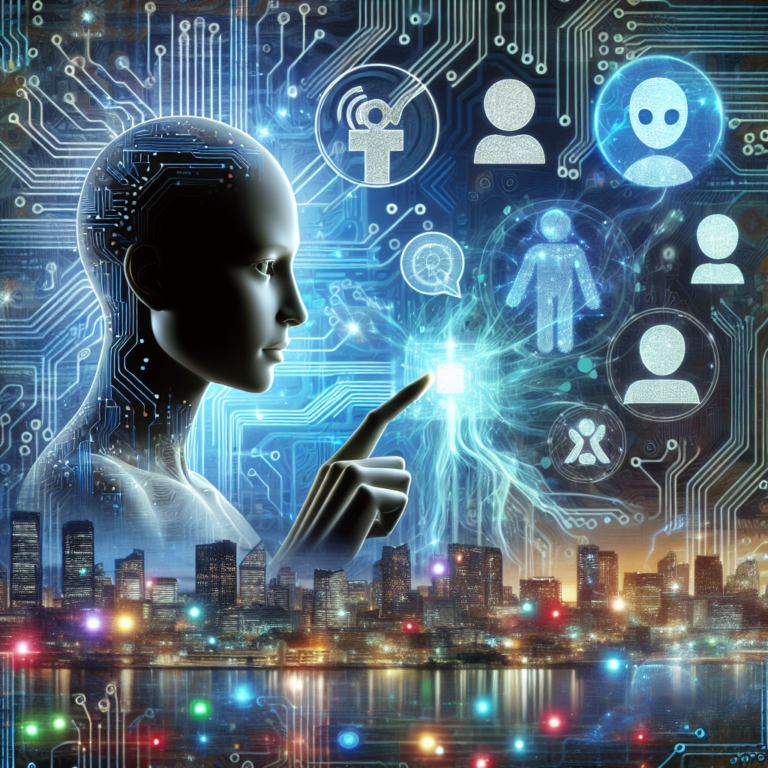
Are you ready to witness the revolution in artificial intelligence? In this article, we will explore the groundbreaking advancements in generative AI with a focus on comparing two of the most powerful models: GPT-3 and GPT-4. Prepare to be amazed as we unravel the capabilities and potential of these AI giants, unleashing a new era of innovation and creative possibilities. Get ready to discover the extraordinary evolution of artificial intelligence as we delve into the world of GPT-3 and GPT-4.
1. Overview of GPT-3 and GPT-4
1.1 Introduction to GPT-3
GPT-3, short for Generative Pre-trained Transformer 3, is a state-of-the-art language processing model developed by OpenAI. Released in June 2020, GPT-3 quickly gained attention for its ability to generate human-like text based on given prompts. With a whopping 175 billion parameters, GPT-3 is one of the largest language models ever created, enabling it to perform a wide range of language-related tasks.
1.2 Introduction to GPT-4
GPT-4 is the successor to GPT-3 and builds upon its predecessor’s achievements. While specifics about GPT-4 are limited, it is expected to push the boundaries of generative AI even further. OpenAI has hinted that GPT-4 will have a larger model size and more advanced capabilities, setting the stage for groundbreaking advancements in natural language understanding and generation.
2. Comparison of Architecture
2.1 Neural Network Structure of GPT-3
GPT-3 utilizes a deep neural network architecture called Transformer. This architecture consists of multiple encoder and decoder layers, each comprising attention mechanisms, feed-forward neural networks, and residual connections. The unique aspect of GPT-3’s architecture is its sheer size, with the transformer layers stacked on top of each other, forming a deep and complex network that enables the model to process and understand language at a high level.
2.2 Neural Network Structure of GPT-4
While the exact details of GPT-4’s architecture are not yet known, it is expected to retain the transformer-based structure like its predecessor. However, it is anticipated that GPT-4 will feature improvements in terms of depth, width, or both, allowing for increased complexity and potentially enhanced performance. These architectural enhancements may enable GPT-4 to better capture long-range dependencies and improve its ability to generate coherent and contextually relevant responses.

3. Training Data and Model Size
3.1 GPT-3 Training Data
GPT-3 owes its impressive language capabilities, in part, to its vast training dataset. It was trained on a diverse range of internet text sources, including books, articles, websites, and other textual resources. This extensive training corpus helps GPT-3 better understand and generate human-like text by exposing it to a wide array of linguistic patterns, styles, and topics.
3.2 GPT-4 Training Data
Just like GPT-3, GPT-4 is expected to undergo extensive training using a large and diverse dataset. Although the specifics of the training data for GPT-4 have not been disclosed, it is presumed that OpenAI will utilize an even larger and more varied dataset to further enhance the model’s language comprehension and generation capabilities.
3.3 Model Sizes of GPT-3 and GPT-4
GPT-3 stunned the AI community with its remarkable 175 billion parameters, making it one of the largest language models available. The colossal size of GPT-3 is instrumental in its ability to generate coherent and contextually relevant responses. While the exact details of GPT-4’s model size remain unknown, it is anticipated to surpass the parameters of its predecessor. A larger model size would enable GPT-4 to handle more complex language tasks and potentially achieve even more impressive results.
4. Performance and Accuracy
4.1 Natural Language Understanding
GPT-3 has made significant strides in natural language understanding, demonstrating the ability to comprehend and provide meaningful responses to a variety of prompts. Its training on vast amounts of data allows GPT-3 to grasp context, disambiguate language, and understand nuanced meanings to a certain extent. However, GPT-3 is not immune to errors and may sometimes produce incorrect or nonsensical answers.
4.2 Language Generation
One of GPT-3’s standout features is its impressive language generation capabilities. It can generate coherent and contextually relevant text, mimicking the style and content of the training data. GPT-3 has been successful in creative writing, chatbot interactions, and even code generation. However, generating text that consistently matches human-level quality remains a challenge for GPT-3, and it can sometimes produce outputs that are nonsensical or lack proper coherence.
4.3 Text Completion and Summarization
GPT-3 has exhibited promising results in text completion and summarization tasks. It can generate logical completions to partial sentences, allowing for smoother and more efficient writing. Additionally, it can summarize lengthy documents, condensing the key points into more concise paragraphs. While GPT-3’s performance in these areas is impressive, there is room for improvement, especially in generating more concise and accurate summaries.

5. Ethical Considerations
5.1 Bias and Fairness
As with any AI model, concerns regarding bias and fairness arise when deploying GPT-3. The training data used to train GPT-3 might contain implicit biases present in the source materials, leading to biased responses. Recognizing and addressing these biases is crucial to ensure ethical and fair use of AI language models like GPT-3.
5.2 Misinformation and Manipulation
The power of language models like GPT-3 comes with the risk of potential misinformation and manipulation. There is a possibility of malicious actors utilizing AI models to generate misleading or harmful content. OpenAI, in its responsible AI practices, aims to tackle these challenges by implementing safety measures to counter the spread of misinformation and potential malicious use.
6. Real-World Applications
6.1 GPT-3 Applications
GPT-3 has seen a wide range of applications across various domains. It has been utilized in content generation for marketing materials and creative writing. GPT-3 has also been integrated into chatbots, virtual assistants, and customer support systems, allowing for more natural and engaging interactions. Additionally, GPT-3 holds promise in aiding language translation, language tutoring, and even medical research, where it can assist in analyzing and summarizing scientific publications.
6.2 Potential GPT-4 Applications
With advancements in GPT-4, the potential applications extend even further. Enhanced language capabilities may lead to more accurate text generation, making it invaluable in fields such as content creation, translation services, and transcription. GPT-4’s larger model size may enable it to handle even more complex tasks, potentially assisting in areas like legal research, complex data analysis, or even creative storytelling.
7. Limitations and Challenges
7.1 Computational Resources
Both GPT-3 and GPT-4 demand substantial computational resources for training and inference. The massive model sizes require specialized hardware and extensive computational power, limiting access to organizations and researchers without adequate resources. The high computational requirements pose a challenge in terms of scalability and cost-effectiveness.
7.2 Energy Consumption
The significant computational demand of GPT-3 and potentially GPT-4 can lead to high energy consumption. This poses environmental concerns and sustainability challenges. It becomes essential for future iterations of these models to optimize energy consumption without compromising performance.
7.3 Fine-tuning and Adaptability
GPT-3 and presumably GPT-4 require substantial fine-tuning to perform optimally in specific applications. Fine-tuning involves training the model on domain-specific data to tailor its output. This process can be resource-intensive and time-consuming, making it a challenge to deploy these models on a wide scale. Additionally, ensuring adaptability to changing contexts and user requirements remains an ongoing challenge.
8. Future Implications and Possibilities
8.1 Advancements in AI Technology
The advancements made from GPT-3 to GPT-4 signify the rapid progress in AI technology. The increased model size, improved architecture, and enhanced capabilities of GPT-4 demonstrate the potential for even more sophisticated language models in the future. This trajectory suggests that AI will continue to play an increasingly significant role in various industries and domains.
8.2 Impact on Industries and Human Workforce
The deployment of GPT-3 and its future iterations will likely have far-reaching implications across industries. AI language models have the potential to automate various tasks traditionally performed by humans, leading to both opportunities and challenges in the workforce. Industries such as customer support, content creation, and data analysis may experience shifts as AI language models like GPT-4 become more prevalent.
9. Comparison of Cost and Availability
9.1 Cost of GPT-3
The cost of utilizing GPT-3 depends on factors such as the extent of usage, level of fine-tuning required, and access to API availability. OpenAI offers different pricing tiers based on these factors to cater to a wide range of users. However, GPT-3’s high computational demands can contribute to increased costs related to infrastructure and maintenance.
9.2 Cost of GPT-4
Given GPT-4’s expected larger model size and potentially enhanced capabilities, it is likely that the cost of using GPT-4 will reflect these advancements. While specific pricing details for GPT-4 are currently unavailable, it can be anticipated that using the model will require sufficient computational resources and budgetary considerations.
9.3 Availability of GPT-3 and GPT-4
During its initial release, GPT-3 was made available through an API access program. OpenAI has actively expanded access to GPT-3 and aims to increase availability over time. As for GPT-4, it is uncertain when and how its availability will be rolled out. OpenAI’s approach to accessibility and distribution will likely be influenced by factors such as hardware requirements, readiness of the model, and user demand.
10. Conclusion
GPT-3 and the upcoming GPT-4 represent significant milestones in the field of generative AI. These language models have showcased impressive language understanding and generation capabilities, with potential applications spanning multiple industries. While GPT-3 has already made a substantial impact, the advancements expected in GPT-4 hold the promise of even more sophisticated language processing abilities. However, challenges such as bias mitigation, ethical considerations, computational resource requirements, and fine-tuning remain important areas to address as these models continue to evolve. As AI technology progresses, the ongoing societal and ethical implications of deploying AI language models like GPT-4 warrant careful consideration to ensure responsible use and harness the full potential of this transformative technology.






